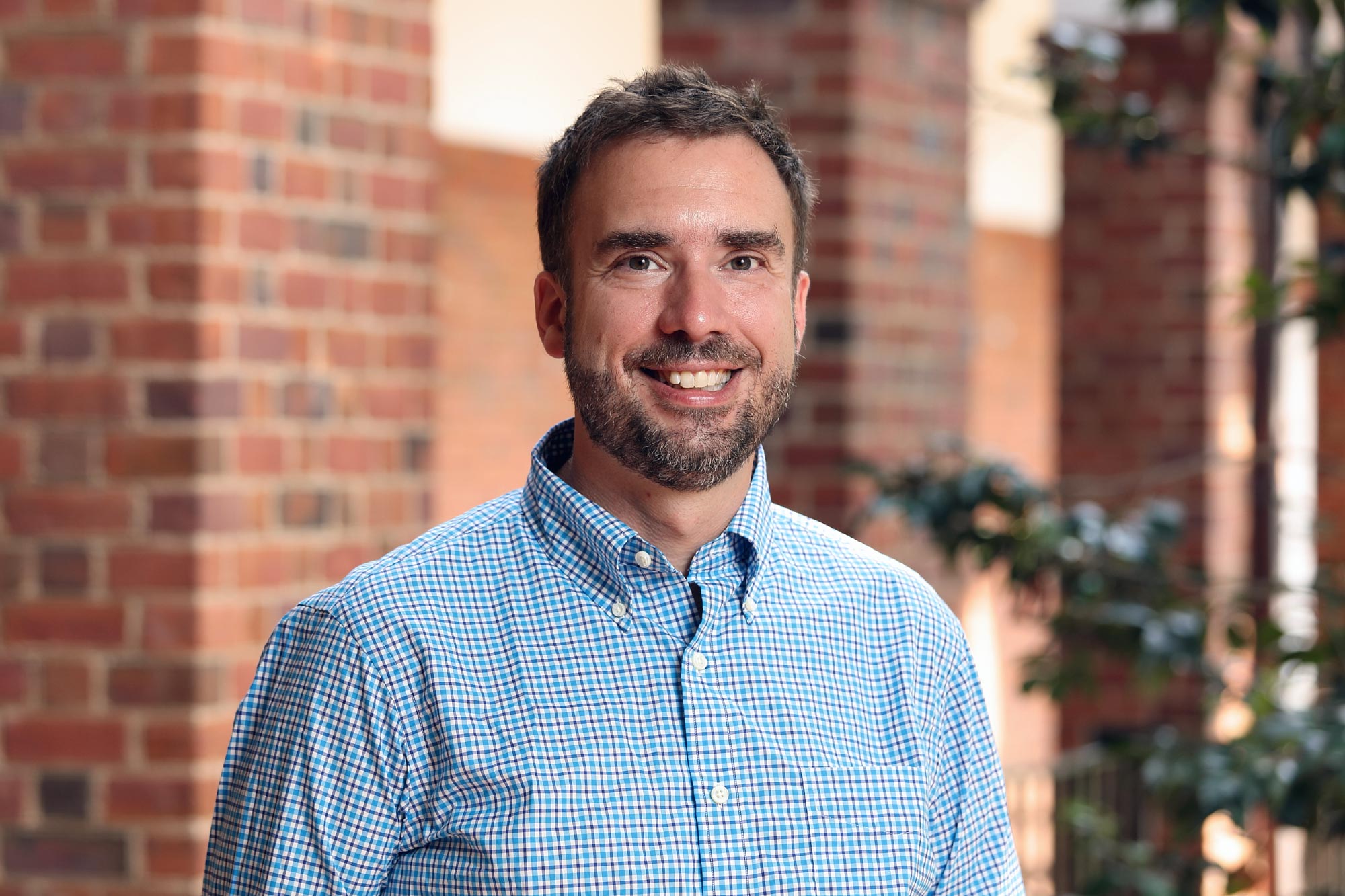On April 3, as COVID-19 was already rapidly spreading across the US, the National Science Foundation issued a call for immediately implementable research to fight the disease as part of CARES – the federal Coronavirus Aid, Relief and Economic Security Act.
Within a week, University of Virginia associate professor of chemical engineering Bryan Berger and his longtime collaborator, Jeffery Klauda, responded.
Berger and Klauda, an associate professor in the Department of Chemical and Biomolecular Engineering at the University of Maryland, proposed combining the power of mathematical modeling with high-throughput screening to fast-track answers crucial to understanding how SARS-CoV-2, the coronavirus that causes COVID-19, propagates within its human host. High-throughput methods automate experiments to increase the number that can be performed and speed the time to discovery.
Berger and Klauda each received a $150,000 award from EAGER, the National Science Foundation’s Early Concepts Grant for Exploratory Research funding program, which is designed for “untested, but potentially transformative” research approaches. The grants will support Berger and Klauda’s study of proteins linked to the virulence of SARS-CoV-2 in humans using integrated experimental and computational methods.
The viral proteins Berger and Klauda study, named ORF7a and ORF7b, form larger protein complexes unique to coronaviruses. Such protein structures come together through a chemical process called oligomerization. Berger likened the formation of these complexes to organizing a parade.
“One person (or protein) alone can’t make a parade, but once groups of people (or proteins) assemble in a specific order you have a celebration. Depending on the order, you can have a great (effective) parade or one that’s not as good (effective),” Berger said.
“There is evidence these complexes are important in preventing proper host immune recognition and response,” Berger said. “ORF7a and ORF7b are not well understood, but previous studies suggest they are key for rapid spread during infection – i.e., they dampen the individual’s immune response, so the virus can propagate more quickly once an infection occurs.”

Understanding the mechanisms underlying how the virus propagates is critically important to stopping it.
The UVA team – which includes recent chemical engineering Ph.D. graduate James Tang, who is now a postdoctoral research associate at UVA; chemical engineering Ph.D. student Madison Mann; and biomedical engineering Ph.D. student Nathanael Sallada – study how the viral proteins physically interact with human proteins through lab experiments. Klauda uses data from these studies to refine models that predict how ORF7a and ORF7b proteins interact with proteins important in immune response, which Berger’s lab will in turn test through experimentation.
“Our focus is on studying the viral interactions with the host at a molecular level,” Berger said. “Jeff’s simulations, which create 3-D images of the ORF7a and ORF7b complexes, are essential to help inform and design better experiments, as well as understand the results of those experiments. Through this iterative process, we will develop new models of these interactions and methods to study them in the lab. As we’re accumulating data and refining our methods, we’ll make our findings available to other COVID-19 researchers.”
Among their innovations, the UVA team developed technologies to rapidly design, and then test, molecules that have the potential to inhibit the formation of ORF7a and ORF7b complexes. Klauda uses data on molecules that prove successful at inhibiting oligomerization in the lab to create models of the ORF7a and ORF7b complexes to better understand the specific roles ORF7a and ORF7b play in viral infection. These successful molecules – identified through this screen, model, refine and repeat protocol – may then become lead candidates for preventing viral propagation within the host through further research.
The integration of computational methods is important, Berger said, because it reduces the time and effort it takes to discover the foundational science researchers need to design therapies.
Berger and Klauda will share their findings through the National Science Foundation’s COVID Information Commons PI Survey, a tool that helps researchers working on COVID-related projects identify collaborators.
Berger’s lab also will provide the tools it develops free through Addgene, a global nonprofit repository for genetic materials used in biomolecular research. Another outcome of the work will be training for graduate students and post-doctoral fellows in the experimental and computational methods that result from their research, as well as opportunities to present this work at conferences for coronavirus research.
Media Contact
Article Information
June 18, 2020
/content/rapid-responders-engineer-helps-battle-covid-19-science-funded-cares-act

